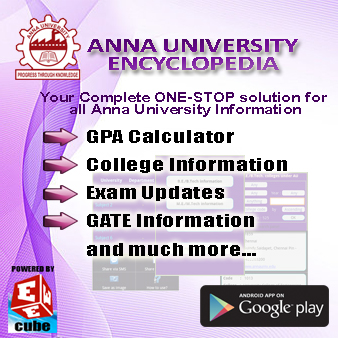SUBJECT RESOURCES:
CLICK HERE to access 'Question Banks'
CLICK HERE to access 'Previous Year Question Papers'
CLICK HERE to access '2 Marks'
CLICK HERE to search more about this subject
SYLLABUS:
CLICK HERE to access 'Question Banks'
CLICK HERE to access 'Previous Year Question Papers'
CLICK HERE to access '2 Marks'
CLICK HERE to search more about this subject
SYLLABUS:
CS2363 COMPUTER NETWORKS L T P C
3 1 0 4
UNIT I 9
Introduction to networks – network architecture – network performance – Direct link networks –
encoding – framing – error detection – transmission – Ethernet – Rings – FDDI - Wireless networks
– Switched networks – bridges
UNIT II 9
Internetworking – IP -
ARP – Reverse Address Resolution Protocol – Dynamic Host Configuration
Protocol – Internet
Control
Message Protocol – Routing –
Routing algorithms –
Addressing
–
Subnetting – CIDR
– Inter domain routing – IPv6
UNIT III 9
Transport Layer – User Datagram Protocol (UDP) – Transmission Control Protocol – Congestion
control – Flow control
– Queuing Disciplines – Congestion
Avoidance Mechanisms.
UNIT IV 9
Data Compression – introduction to JPEG, MPEG, and MP3 – cryptography – symmetric-key – public-key – authentication – key distribution – key agreement – PGP – SSH – Transport layer security – IP Security – wireless security – Firewalls
UNIT V 9
Domain Name System (DNS) – E-mail – World Wide Web (HTTP) – Simple Network Management
Protocol – File Transfer Protocol (FTP)– Web Services -
Multimedia Applications – Overlay networks
TEXT BOOK:
L = 45
T = 15 TOTAL = 60 PERIODS
1.Larry L. Peterson and Bruce S. Davie, “Computer
Networks: A Systems Approach”,
Fourth Edition, Elsevier
Publishers Inc., 2007.
REFERENCES:
1. James F. Kuross and Keith W. Ross, “Computer
Networking: A Top-Down Approach
Featuring the Internet”, Third Edition, Addision wesley, 2004.
2. Andrew S. Tanenbaum, “Computer
Networks”, Fourth Edition, PHI, 2003.
3. William
Stallings, “Data and Computer Communication”, Sixth Edition, Pearson
Education, 2000.
4. Nader F. Mir, ”Computer and communication networks”, Pearson Education, 2007.
|
|










No comments:
Post a Comment
Note: Only a member of this blog may post a comment.